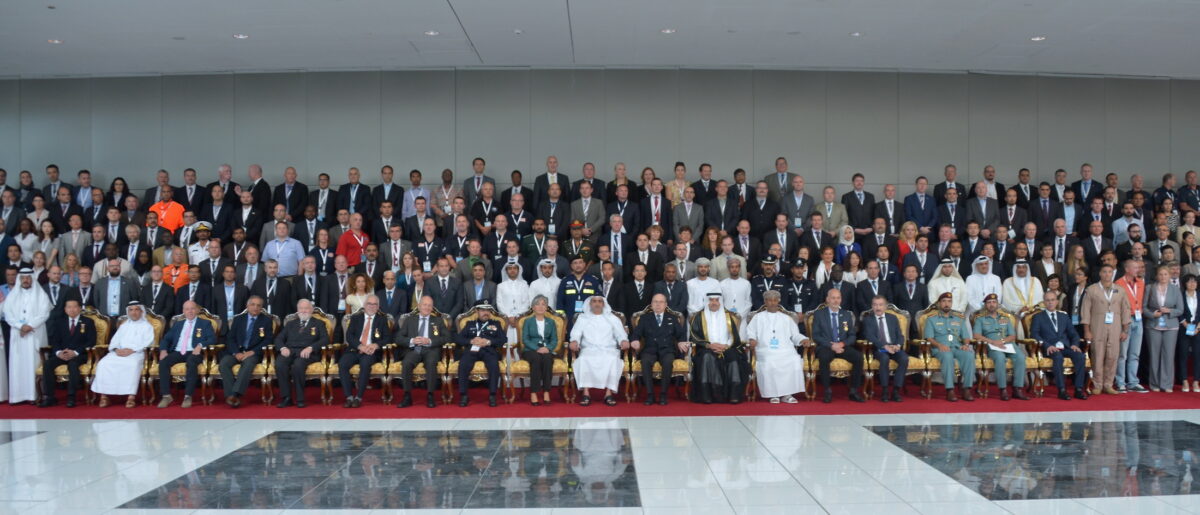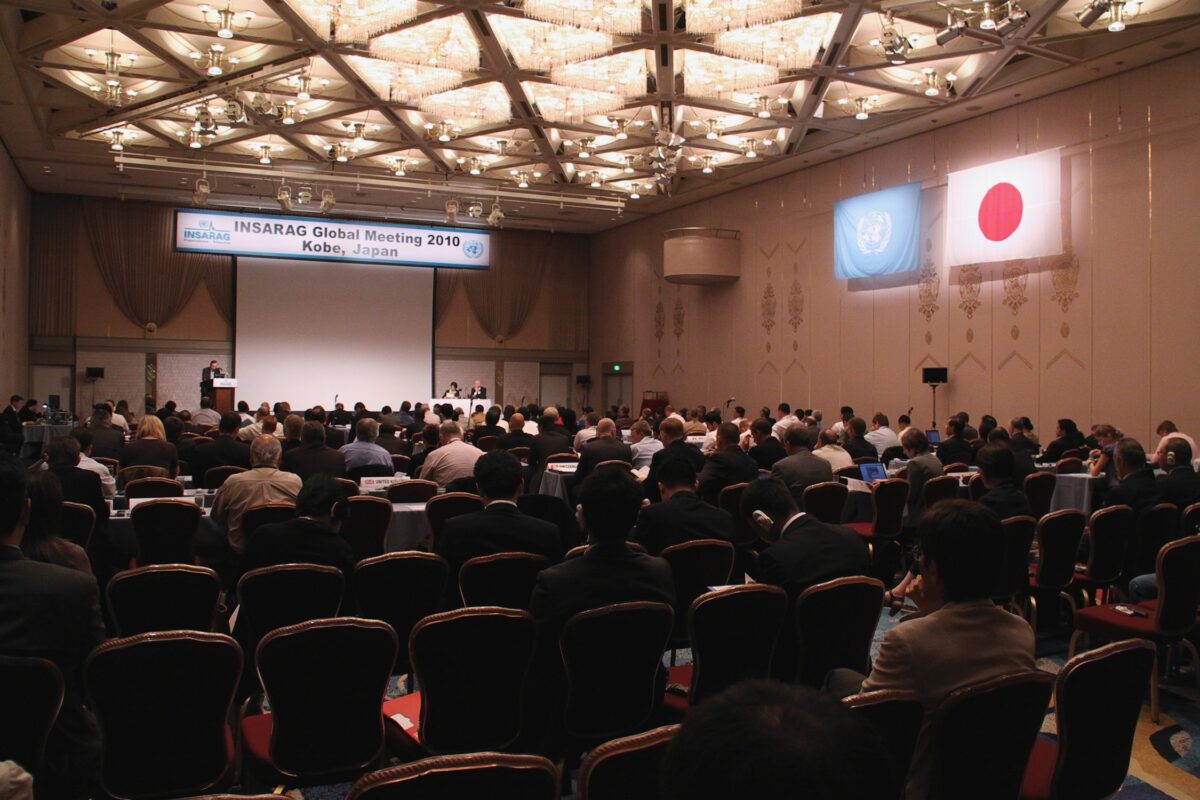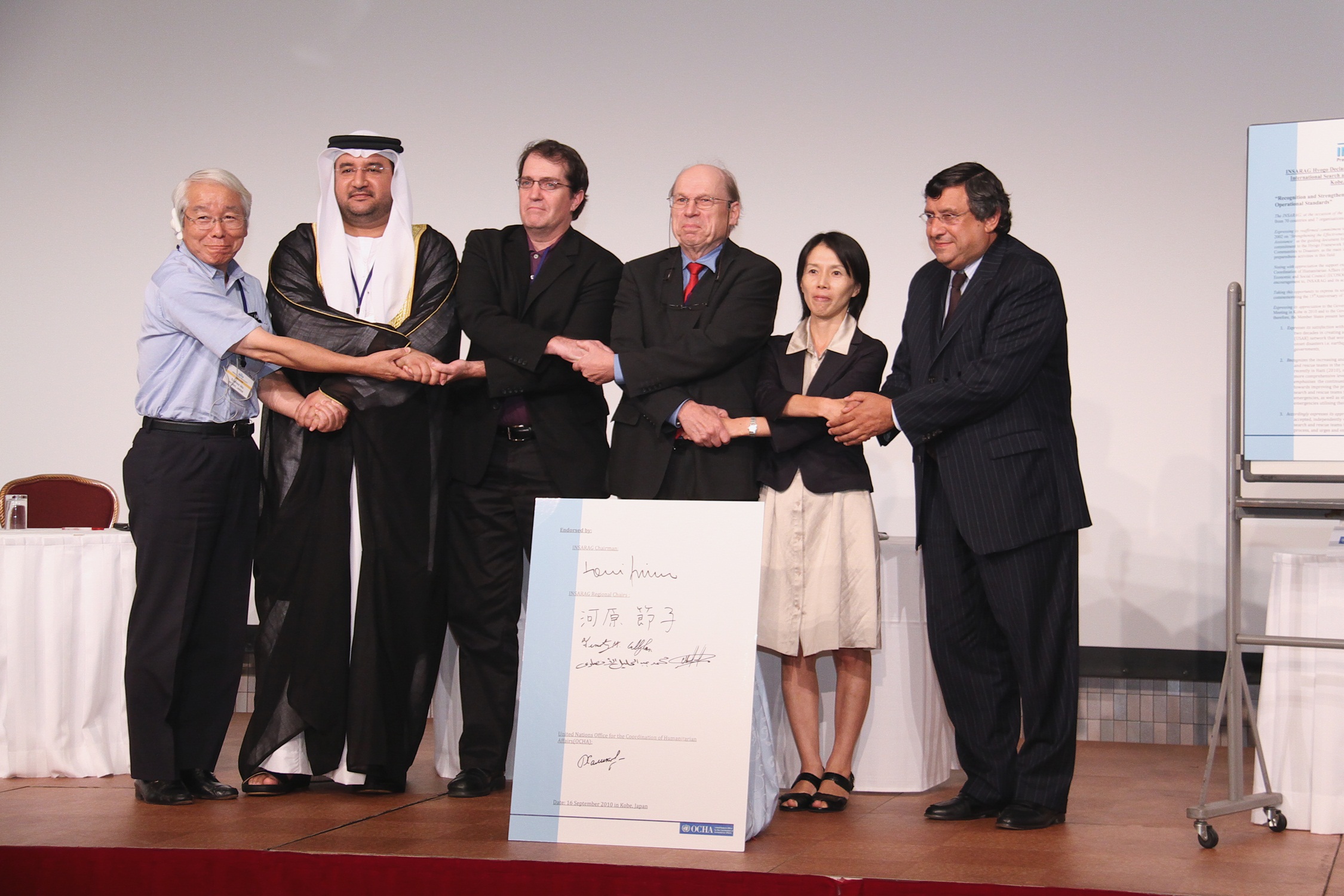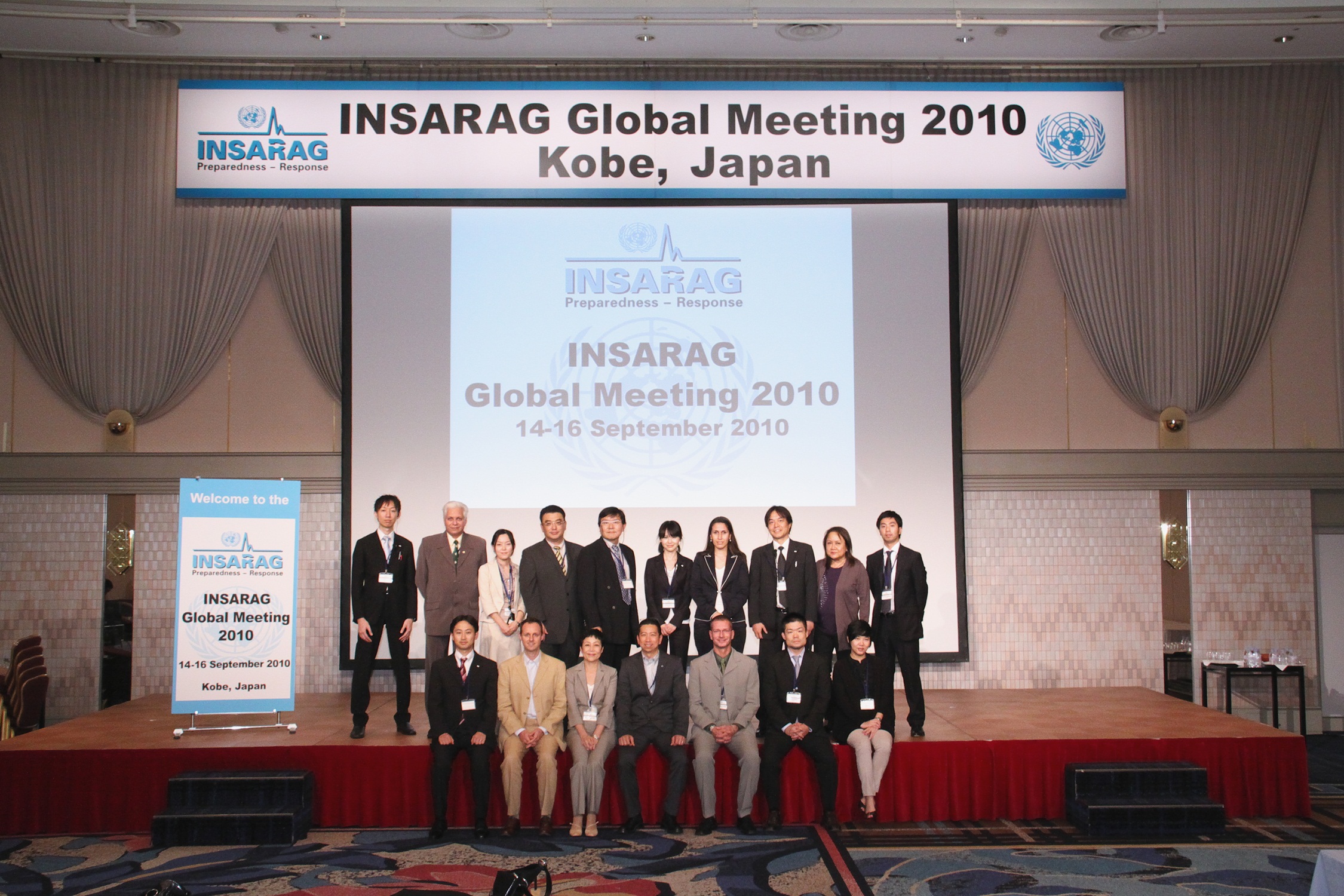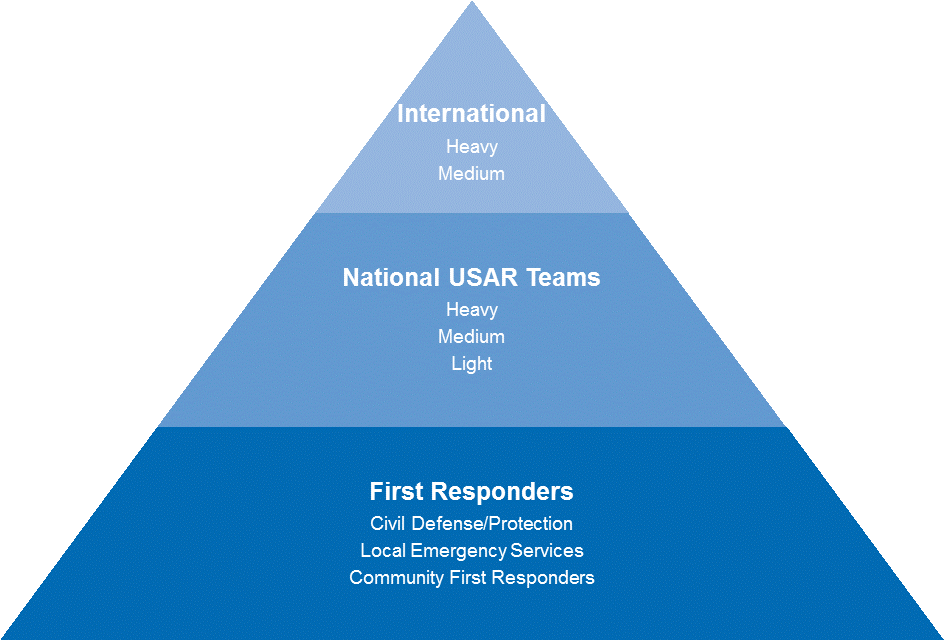USAR Capacity Building – National, Mongolia / Ulaanbaatar
|
Name of the Project:
|
USAR Capacity Building – National
|
|
Country/City:
|
Mongolia / Ulaanbaatar
|
|
Organization:
|
Swiss Agency for Development and Cooperation (SDC)
|
|
Project description:
|
Project description:
On request of Mongolian National Emergency Management Agency (NEMA) the implementation of a USAR capacity building project on national level started in mid-2017., aiming at upgrading NEMA’s existing Search and Rescue (SAR) capacities towards application in urban contexts (USAR), in particular Mongolia’s capital Ulaanbaatar.
The cooperation had been initiated by an informal dialogue between NEMA, which hosted the INSARAG Asia-Pacific Earthquake Response Exercise (ERE) in June 2015, Switzerland / SDC as well as the Chinese Earthquake Administration (CEA).
During a first (pilot) phase of the project until end 2018, on the base of bilateral cooperation NEMA-SDC, 4 working groups of NEMA (Modular Training Ground/MTG, Equipment/Tools, Training and Management) developed – with support of the Swiss experts – the conceptual components of NEMA’s overall USAR mechanism, including planning of the MTG. Furthermore, some new rescue tools were purchased.
The project will be extended latest until end 2021. The ongoing second phase (until mid-2019) mainly includes the tendering and construction of the MTG as well as basic training with the new rescue tools and consultancy.
Meanwhile China has established the new Ministry of Emergency Management (MEM), which integrates several already previously existing institutions, including CEA. MEM is about to join the implementation process to support NEMA together with SDC.
|
|
Local Implementing Counterparts:
|
National Emergency Management Agency (NEMA)
|
|
Contact Person:
|
Simon Tschurr
|
|
Contact Person Phone Number:
|
++41 58 462 39 95
|
|
Contact Person Email Address:
|
simon.tschurr@eda.admin.ch
|
Guidelines for filling in the form:
- If you have any documents related to your projects, we will also be happy to add these documents to your project. However, please bear in mind that these documents will be public.
- If you have any projects that have been implemented by two INSARAG member countries/organisations, it is suggested that names of both countries/organizations are written under ‘organization’ field. Otherwise, if both INSARAG member countries/organisations enter the same project, then there will be double entry into the directory.
- Please take note that this directory is only for the projects funded by the implementing country/organization without any cost to the recipient country.
- Once you send us your projects, we will upload them to the web page. When the web page is launched, we will provide you an account. With this account, you can always enter/delete/modify your own data.
- Please find below an example project entry:
JCD USAR Capacity Building – International
|
Name of the Project:
|
JCD USAR Capacity Building – International
|
|
Country/City:
|
Jordan / Amman
|
|
Organization:
|
Swiss Agency for Development and Cooperation (SDC)
|
|
Project description:
|
Project description:
The capacity building project between SDC and its national counterpart, the Royal Jordan Civil Defence (JCD), had started in 2001 and was finalized by end 2016.
The aim of the cooperation had been to develop a centrally trained and equipped USAR entity at heavy level, in accordance with the INSARAG Guidelines, including SOPs for deployment, outdoor facilities as well as all necessary components of a canine search dog (K9) unit. With support of SDC’s expertise JDC had built – and is nowadays maintaining – a large training base for USAR specifically, including all elements for the various training phases, learning-consolidation-application.
In May 2013 JCD successfully passed its INSARAG External Classification (IEC) at the training academy outside of Amman, as the first INSARAG classified heavy USAR team in the Arab world.
The continuous technical dialogue between JCD and SDC in the meantime resulted in Switzerland/SDC’s mentorship for the IER in October 2018 within the frame of an additional small grant project JCD passed its first IER successfully.
|
|
Local Implementing Counterparts:
|
Royal Jordan Civil Defence
|
|
Contact Person:
|
Simon Tschurr
|
|
Contact Person Phone Number:
|
++41 58 462 39 95
|
|
Contact Person Email Address:
|
simon.tschurr@eda.admin.ch
|
Guidelines for filling in the form:
- If you have any documents related to your projects, we will also be happy to add these documents to your project. However, please bear in mind that these documents will be public.
- If you have any projects that have been implemented by two INSARAG member countries/organisations, it is suggested that names of both countries/organizations are written under ‘organization’ field. Otherwise, if both INSARAG member countries/organisations enter the same project, then there will be double entry into the directory.
- Please take note that this directory is only for the projects funded by the implementing country/organization without any cost to the recipient country.
- Once you send us your projects, we will upload them to the web page. When the web page is launched, we will provide you an account. With this account, you can always enter/delete/modify your own data.
- Please find below an example project entry:
India / Ghaziabad, Mundali Indo Swiss Collaboration in Training Systems USAR Capacity Building – National
|
Name of the Project:
|
INSWIT (Indo Swiss Collaboration in Training Systems)
USAR Capacity Building – National
|
|
Country/City:
|
India / Ghaziabad, Mundali
|
|
Organization:
|
Swiss Agency for Development and Cooperation
|
|
Project description:
|
Project description:
The capacity building project between SDC and its national counterparts, the National Disaster Management Authority (NDMA), which advises the Ministry of Home Affairs in the Disaster Preparedness and Response Programs, as well as the National Disaster Response Force (NDRF) had started with first support activities in 2007 and was finalized by end 2017.
The aim of the cooperation had initially been to develop a centrally trained and equipped USAR entity at heavy level, in accordance with the INSARAG Guidelines, including SOPs for deployment, outdoor training facilities as well as all necessary components of a canine search dog (K9) unit. Initially it had been envisaged to achieve the INSARAG External Classification (IEC) in 2015.
The development of the USAR team had started in Bubaneshwar / Mundali. In July 2012 the Indian partners decided to change the location to Ghaziabad (near Delhi) in order to ease international deployment due to the vicinity of the international airport. In 2015, following some changes in the central government, the project partners shifted their focus from the development of an internationally deployable USAR entity towards capacity building on national level. Subsequently, a group of master instructors for each USAR field of Search, Rescue and Medical as well as operational leadership was trained by Swiss experts – in Mundali and finally in Ghaziabad – in several methodology courses at the various training levels learning-consolidation-application. In parallel, the canine search (K9) unit, located in Mundali, was further developed. The newly trained instructors are supposed to disseminate their know-how in the 12 NDRF Battalions countrywide.
In 2017 a large USAR training base nevertheless of impressing quality was finally constructed on the premises of the 3rd NDRF Batalion in Ghaziabad, just in time before concluding the project with an operational USAR exercise in November 2017.
In 2018 NDRF submitted a request to SDC for mentorship in view of a newly foreseen IEC. Assuming that the further development of the national capacities towards an international USAR would – beyond mentorship – lead to another intensive capacity building process, beyond SDC’s ressources, SDC could not positively respond to the request.
Nevertheless, SDC recommended NDRF to apply to the INSARAG office to carry out a fact finding mission under the lead of INSARAG Asia-Pacific Region (observation and evaluation of an USAR exercise) supported by an international group of experts. The current state of NDRF’s IEC-suitable USAR capacities is not evident to date. The mission shall provide a guidance for NDRF about the necessary steps.
|
|
Local Implementing Counterparts:
|
National Disaster Management Authority (NDMA) National Disaster Response Force (NDRF)
|
|
Contact Person:
|
Simon Tschurr
|
|
Contact Person Phone Number:
|
++41 58 462 39 95
|
|
Contact Person Email Address:
|
simon.tschurr@eda.admin.ch
|
Guidelines for filling in the form:
- If you have any documents related to your projects, we will also be happy to add these documents to your project. However, please bear in mind that these documents will be public.
- If you have any projects that have been implemented by two INSARAG member countries/organisations, it is suggested that names of both countries/organizations are written under ‘organization’ field. Otherwise, if both INSARAG member countries/organisations enter the same project, then there will be double entry into the directory.
- Please take note that this directory is only for the projects funded by the implementing country/organization without any cost to the recipient country.
- Once you send us your projects, we will upload them to the web page. When the web page is launched, we will provide you an account. With this account, you can always enter/delete/modify your own data.
- Please find below an example project entry:
URBAN SEARCH AND RESCUE CAPACITY DEVELOPMENT IN NEPAL
Kathmandu
Organization: Swedish Civil Contingencies Agency (MSB)
In line with the Nepal Risk Reduction Consortium and the recommendations from the INSARAG emergency response capacity scoping mission conducted in May 2011, discussions are ongoing with counterparts in Nepal to initiate a national USAR system/organisation structure as part of the overall disaster preparedness and response system. The tentative timeframe is 2011-2014.
At least one national USAR team will be developed. The team or teams will enable timely and efficient search and rescue operations in structural building failures around the Kathmandu valley as well as in other urban and suburban areas in Nepal.
Additionally, USAR training resources such as trainers and training equipment will be made available as assets for district and municipality level search and rescue capacities in the country. Development of standards and institutional links to USAR will also be beneficial for search and rescue capacities at all levels.
Contact person: Heidi Huusko
Phone: +46 10 240 5254
E-mail: heidi.huusko@msb.se
CAPACITY-DEVELOPMENT FOR URBAN SEARCH AND RESCUE IN THE OCCUPIED PALESTINIAN TERRITORY
The West Bank of the Occupied Palestinian Territory (oPt)
Organization: The Swedish Civil Contingencies Agency (MSB)
Project time scope:
01 Dec 2012 – 30 Jun 2013 Pre-Inception, West Bank
MoU, building relations, defining aims, scopes and resources. Defining baselines. Internal evaluation and recommendations.
01 Jul 2013 – 31 Dec 2013 Phase I, West Bank
Planning, identification of national Trainers (ToT), writing of national training curriculum. Defining baselines. Internal evaluation and recommendations.
NB: Funding is currently only available from Sida for the Pre-Inception and Phase I.
01 Jan 2014 – 31 Dec 2015 Phase II, West Bank
Implementation. Training, procurement of USAR equipment, advising on rubble field for collapsed building simulation. Yearly external and internal evaluations and recommendations.
Option
Depending on the outcomes of the above, availability of funding, and on the feasibility, the project may be implemented also for the Gaza Strip. In that case phases III and IV will be added.
Development goal:
More lives are saved in disasters involving structural collapse incidents.
Project purpose:
By supporting the Palestinian Civil Defence and relevant stakeholders in becoming self-sufficient in terms of urban search and rescue training and response, the capacity to organise a timely and effective lifesaving response in disasters involving structural collapse has been increased.
Desired outputs (may not be fully implemented due to current limitation of funds):
1. A national rescue training cadre with USAR competence has been trained and established
2. A national USAR training system has been created and standardised according to the national needs of oPt. This includes a printed training curricula
3. Linkage between the Palestinian Civil Defence and the INSARAG system has been established and is entertained over time
4. A USAR component has been established according to national preconditions and needs, and has been institutionalised in the national response framework
5. USAR equipment for the national support units and a corresponding set of equipment intended for training purposes at the Civil Defence Rescue Training Centre in Jericho has been procured
6. The USAR equipment has been organised in a well-functioning logistical system, with transparent responsibilities and defined maintenance procedures.
7. The Civil Defence Rescue Training Centre in Jericho has adequate outdoor training facilities for training in urban search and rescue.
Due to the current limitation of funds to the Pre-Inception and Phase I, the MSB will focus on delivering within project outputs 2 and 3 during year 2013, touching upon issues in relation to outputs 1 and 4. In case of funding becoming available for the Phase II, then all outputs will come into focus and be developed through the course of the project.
Local implementing counterparts: The Palestinian Civil Defence, the Palestinian Authority in the West Bank, Ramallah. The project is implemented in cooperation with the Ministry for Foreign Affairs in Iceland (MFA) and is a contribution through the UNDP’s programme “Enhancing Capacities for Disaster Risk Management in Palestine”.
Contact person: Mr Daniel Hjärne
Phone: Office:  +46 10 240 5118, Mobile:
+46 10 240 5118, Mobile:  +46 76 14 11 777
+46 76 14 11 777
E-mail: daniel.hjarne@msb.se
DEVELOPMENT OF URBAN SEARCH AND RESCUE CAPACITY IN PAKISTAN
Islamabad and KarachiOrganization: Swedish Civil Contingencies Agency (MSB)
The aim was to have a national USAR system established and institutionalised, consisting of two heavy and one medium USAR teams in line with the INSARAG guidelines.
The project did establish two heavy USAR teams as well as two solid rubble fields for USAR training, however the medium team was cut out from the project. A total of 44 national instructors has been trained and certified through the project’s Training of Trainers programme.
The national counterpart was the National Disaster Management Authority who coordinated with national bodies such as the Capital Development Authority in Islamabad, City District Government of Karachi, Rescue 1122 Services of Lahore and the Pakistan Army.
International partners were DFID, SDC and UNDP. The project duration was June 2007 – June 2010.
Local implementing counterparts: National Disaster Management Authority (NDMA)
Contact person: Daniel Hjärne
Phone:  +46 10 240 5118
+46 10 240 5118
E-mail: daniel.hjarne@msb.se

URBAN SEARCH AND RESCUE CAPACITY BUILDING IN TAJIKISTAN
DushanbeOrganization: The Swedish Civil Contingencies Agency (MSB)
The project started in September 2007 and is coming to an end in December 2011. The aim is to have at least one trained and equipped USAR entity in place with SOPs for deployment as well as an outdoor training facility.
The USAR entities correspond to rescue groups within three existing local rescue services who were trained and equipped to respond to USAR needs. The creation of a national USAR team in accordance with the INSARAG Guidelines has only very recently been initiated, and is thought to be done after the ending of the current USAR project.
Gender awareness is important in USAR capacity development projects. In one of the trainings 2 out of 15 rescuers were women belonging to the local search and rescue group.
Local implementing counterparts: the Committee of Emergency Situations and Civil Defence (CoES)
Contact person: Daniel Hjärne
Phone:  +46 10 240 5118
+46 10 240 5118
E-mail: daniel.hjarne@msb.se

 Home
Home  Contact
Contact 